Daily ridership 65 000 Website t2c Number of stations 34 Number of lines 1 | Annual ridership 23,725,000 Operator(s) T2C Electrification Overhead line Number of vehicles 26 Began operation 2006 | |
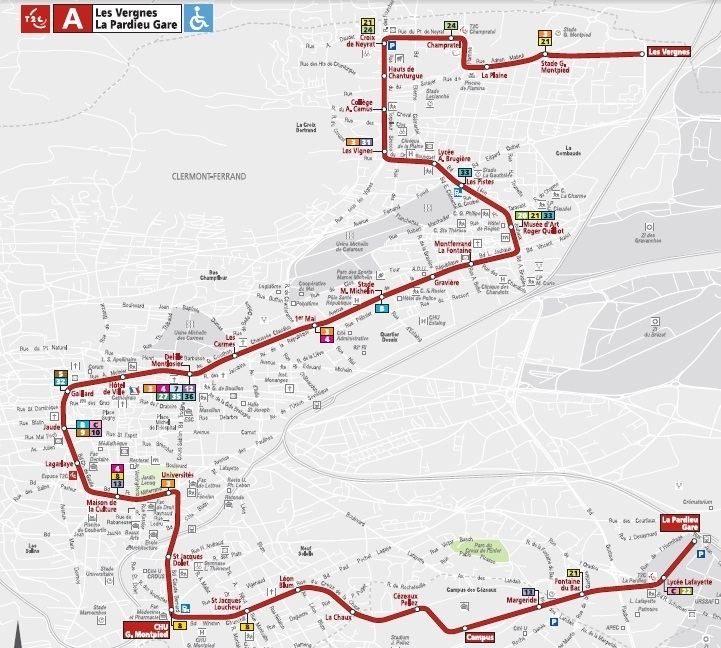 | ||
Owner Syndicat mixte des transports en commun | ||
The Clermont-Ferrand tramway (French: Tramway de Clermont-Ferrand) is a transit system located in the city of Clermont-Ferrand in the Auvergne Region of France. It is a Translohr system, meaning it is guided by a single rail and powered by electricity from Overhead wires.
Contents
- First tramway 1890 1956
- Modern tramway 2006 present
- Extensions
- Stations
- Rolling stock
- Accidents
- References
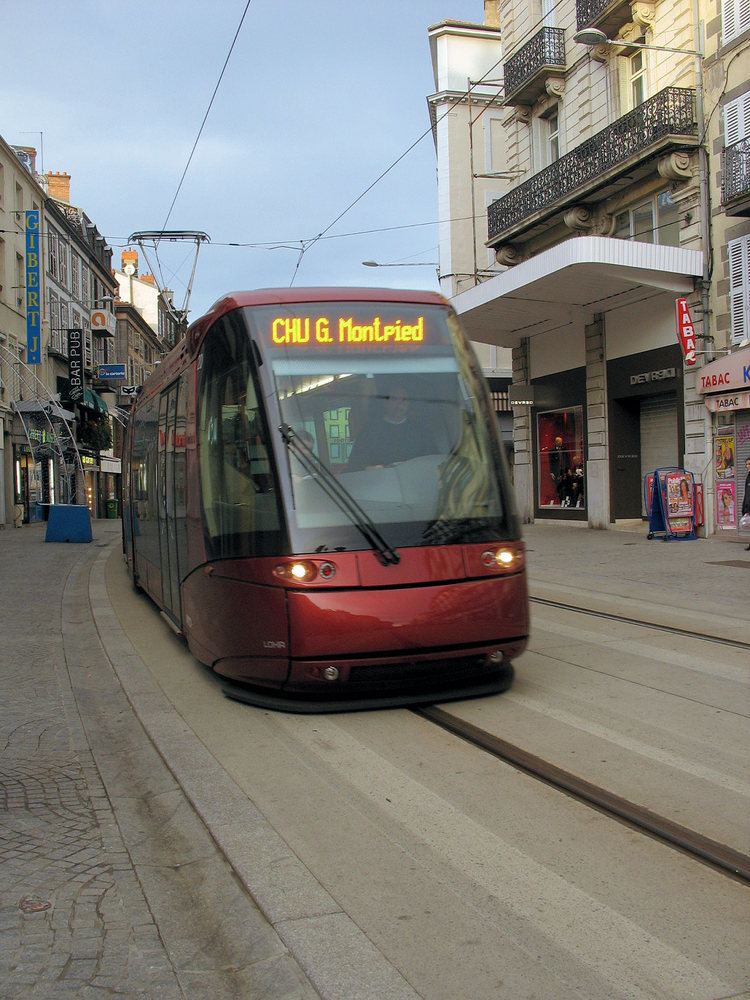
This tramway comprises just one tramline, called Line A, that serves 34 stations and runs on 15.7 kilometres (9.8 mi) of double track length. However, there have been numerous plans for extension of the line, and for the system to expand to include other lines, B and C.
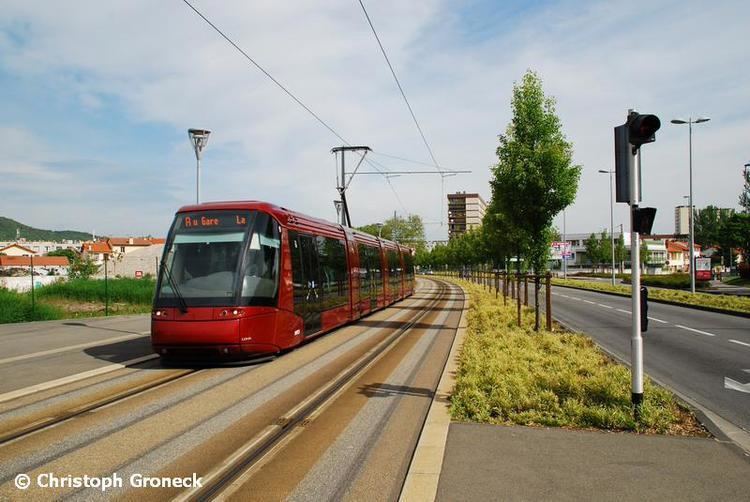
Clermont-Ferrand constructed its first tram system in 1890, but in 1956 the tramway was decommissioned in favor of new bus routes. The current Translohr system officially opened in 2006.
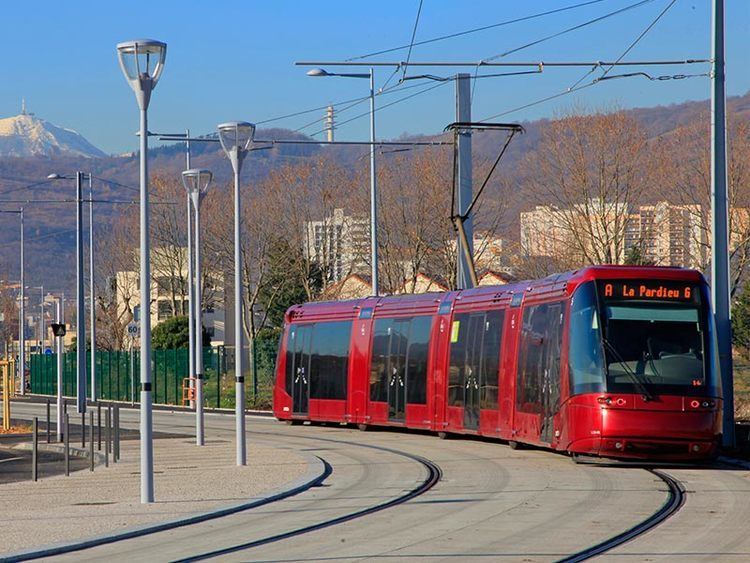
First tramway (1890-1956)
The first tramline in Clermont-Ferrand was put into service on January 7, 1890 by the Electric Tramway Company of Clermont Ferrand. The Clermont-Ferrand tramway distinguished itself from other systems as it was the first to use electricity in France.
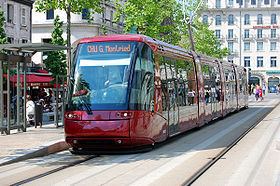
The first 1,435 mm (4 ft 8 1⁄2 in) standard gauge tram track ran from Montferrand to Jaude. Shortly after this, an extension was opened to Royat on l'Avenue des Thermes. A total of 22 two-axle tramcars were put into service. In 1902, a section between Jaude and Place Delille, via Place Gaillard, opened. In 1913, a link to Cermont-Ferrand Train Station via Salins, and a short section between Place Gaillard et Fontgiève, were put into service.
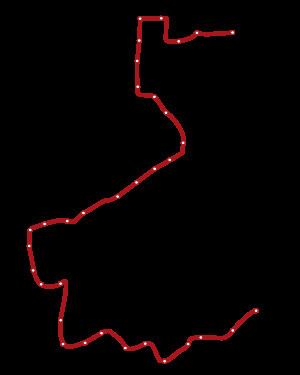
Before the First World War, the Beaumont line was extended to Ceyrat. In 1928, a link to Aubière was created, following the route of Line 3 on Avenue Léon Blum.
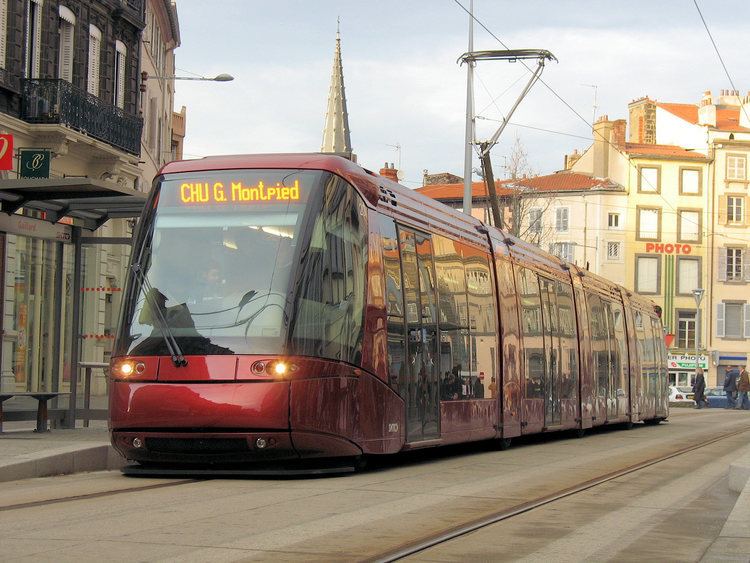
At the end of the Second World War, the tram suffered many setbacks. As cars began to become more popular, the government did not focus any effort on public transportation systems, but instead on the expansion of roads and highways. The tramlines were gradually replaced by buses.
The last tram in Clermont-Ferrand ran on 17 March 1956. After this, public transportation in the city was solely by bus. In many places, the rails were paved over to make way for cars.
Modern tramway (2006-present)
In the 1970s, concern over the consequences of automobile use increased. In the 1983 Elections, a tramway was proposed by Socialist mayor Roger Quilliot in his re-election campaign.
However, the tram project was only seriously considered starting in 1990. The development of the system was given to SOFRETU (now Systra), which proposed the building of two tramlines: one north-south line (which would eventually become Line A), and an east-west line. In 1996, tenders were offered for the rolling stock for the tramway. Alstom proposed that Alstom Citadis trams be used for the system, and Alstom Citadis trams were bought for Line A on 14 October 1996. Thus, the first tramway followed SOFRETU's proposal, which corresponded to the present day Line A.
However, due to pressure from the Chamber of Commerce and industries in Clermont-Ferrand (mostly Michelin), this initial tramway project was halted. A revised project was developed in 2000.
A new tender was made in 2002, and the only bidders were: Irisbus with their Civis trolleybus, Bombardier with their TVR rail transit system, and Lohr Industrie with their Translohr system. The contract was ultimately won by Lohr Industrie due to pressure from the government and from Michelin.
Following a derailment during the testing phase, the inauguration of the first section was delayed by a month, but finally opened in November 2006. The rest of the line opened on 27 August 2007.
The line was closed for seven weeks in 2013 to renovate many stations platforms due to their deterioration.
Extensions
In 2011, an extension of Line A to Vergnes was initiated. Work began in December 2011 and took almost 2 years.
On 14 December 2013, the 2-kilometre (1.2 mi) extension of Line A from Champratel to Vergnes opened to the public. This extension was part of the "Reorganization of Les Verges Region" program, mainly to ease access to Gabriel Montpied stadium.
Stations
Currently, there are 34 stations on the Clermont-Ferrand Tramway. They are located in both Clermont-Ferrand and Aubière communes.
Rolling stock
The tramway of Clermont-Ferrand uses Translohr technology. The initial fleet was only 20 trains, but later, six more were added. Every STE 4 model consists of 4 cars, for a length of 32 metres (105 ft).
Every train has a maximum capacity of 238 people with around 40 sitting. Six trains were priced at approximately 14 million euros.
Accidents
On 26 December 2009, around 7:10, a train crashed at La Pardieu station. No one was injured in the incident, but the whole train was completely destroyed. According to the French Bureau of Ground Transport Accident Investigation, the direct cause of the accident is due to the blocking of a brake because of the general corrosion of its actuating pad system, which neither the design or manufacturer allowed to seal. The spread of the fire resulted from the short distance and lack of firewall between the brakes and the bellows. Also, material lower than French standards were believed to be present due to international imports.
On January 10, 2011, a tram derailed between the Carmes and Celille stations, injuring one person. According to a report by the French Bureau of Ground Transport Accident Investigation, the direct cause of the accident of this Translohr was the detachment of the guide rail from the wheel under the conductor's cabin. This report from the bureau put the Translohr system itself into questioning. Indeed, the deterioration of the tires rollers accumulated at the guide roller, brought these rollers out of the guide rail, removing the guide, driving the vehicle against the wall. Also, the bureau underlined the number of accidents linked to the presence of certain foreign elements. The bureau demanded that Lohr Industrie replaced the parts with ones that would be less prone to deterioration.
On November 9, 2011, a train derailed because the conductor of the train ignored a signal indicating that the track was not switched properly.
